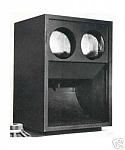Finally getting back to complete my description on veneer installation using wood glue and paper backed veneer.
I recommend that everyone installing veneer, regardless of veneer type and adhesion method, take the time to look over the hints offered on Oakwood Veneer's web site. I started doing veneer quite a while before I discovered them and I went thru a lot of trial and error, wasted product and frustrations. I finally established my system and techniques and was a happy camper with only infrequent problems. When I started using Oakwood and discovered their web site hints I was able to further fine tune my methods - wish I had seen these before.
Some DO's and DO-NOT's
Do - always use a cloth layer between the iron and the veneer. This protects the veneer from being damaged and the iron from collecting sap on the surface. Even more important, the cloth provides an insulation barrier against too much heat being applied. If you apply too much heat the glue will melt or puddle. The goal is to heat the glue to the point that it becomes very sticky like contact cement. If you melt it totally you now have a situation where the veneer will only bond after the glue again dries. This would require that pressure be applied to that spot and left there until the glue is fully dried.
Do - always keep the iron moving and do not ponder in one spot too long. I'm guilty of leaving the iron sit while I swap bugs that are biting at my ankles - stay focused. Too much heat for too long and you have the problems I mentioned above.
Do a large surface in sections. I break the area up into approx. 2 Sq-Ft patches. Some recommend working from the center out in all directions but this is difficult when trying to keep track of where you left off when working a large area.
When you have completed the piece go over the entire area with a veneer roller, cloth removed, and listen for any crackling under the roller. If a problem area is detected, heat and roll again.
Do Not - roll off the exposed overhang or corners. This will break the veneer, usually in a way that it will still show after you have trimmed off the excess.
Do Not try to sand off the overhang. This will give you a louzy edge, especially over the length of a long cabinet side. Small veneer planes are available but in the hands of a non-skilled user they are an accident waiting to happen. They are also iffy when trimming cross-grain. Spend $75-$100 and buy a high speed laminate trimmer with a flush trim bit. Scribe a cut line across grain to prevent chipping and cut slow. Go like hell when cutting with the grain.
After trimming off excess overhang, sand all cut edges. Do not sand across grain (obvious) and do not sand in the up direction as it will possibly lift the veneer. Always sand downward - down, lift the block, raise the block, apply and sand down again - hope that makes sense.
I use a fresh piece of 100 grit since this is just to remove excess. Finish paper will be used later.
After trimming the veneer and before sanding the exposed edges - take your thumb and go along the entire exposed veneer edge, in the upward direction, trying to lift the veneer - like thumbing over a deck of cards or thru the pages of a book. Thumb up only, over the entire edge and listen for loose veneer. You'll know when you hear it if the bond is not good.
A loose edge section or corner can usually be reheated and rolled again to correct the problem. If this does not work then you likely have a spot where there is insufficient glue. You can lift the veneer with a thin blade, apply a spot of wood glue and then tie it down with some masking tape until the glue dries. This is not uncommon at corners as the glue, when applied, wants to leach away from the pointed corners. In warm weather I seldom have problems but when it's colder out I pay particulat attention to these areas when rolling on the glue.
If you find bubbles under the veneer and they will not lay down with more heat and roller pressure then you likely have a trapped air bubble. Take a thin single edge razor blade and slice a line thru the veneer (small as possible. After releasing the air try to heat and roll the spot again. If this does not work then you not only had an air bubble but also not enough glue at that spot. Make your slice a bit longer, try to hold it open so that a small amount of glue can be squeezed thru the crack. Use the blade tip of a small utility knife to insert the glue. Afterwards lightly push down to let excess glue exit the slice. Wipe the area with a damp cloth to clean the grain as best possible. Place a patch of waxed paper over the spot and find a dead weight to sit there for a couple hours while the glue dries - No more heat and roll at this point!!!! This should give you a good bond at the bad spot - and it you're lucky the spot will not show after the sanding and oiling is complete.
Can't think of anything else right now.




 Reply With Quote
Reply With Quote











